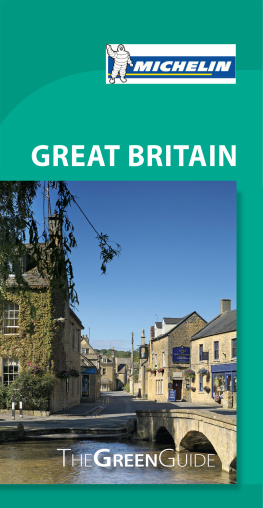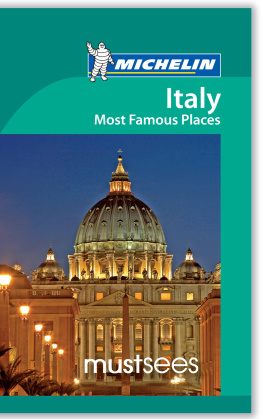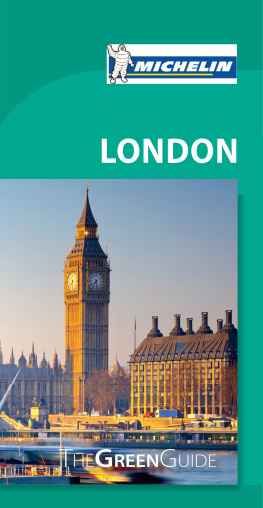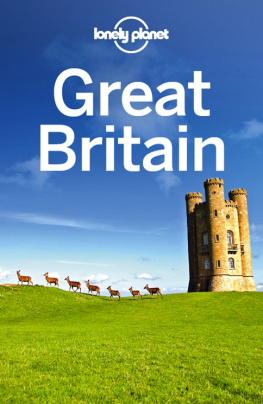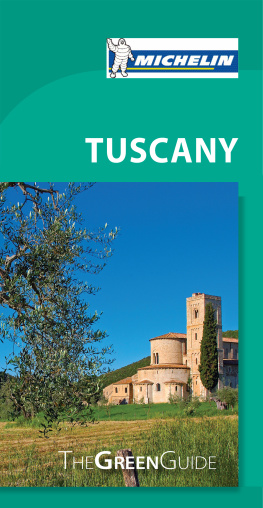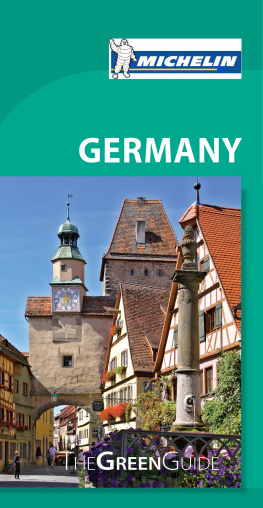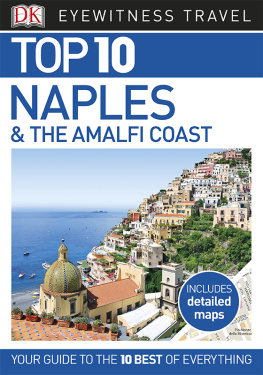THE GREEN GUIDE
Great Britain
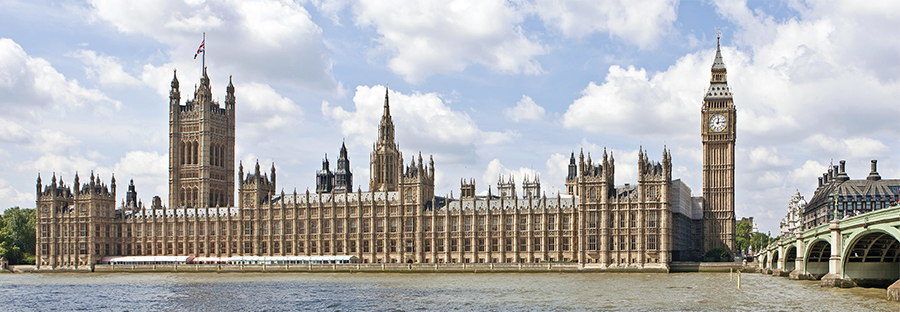
Palace of Westminster and Big Ben from the river Thames
IDREAMSTOCK / age fotostock

How to
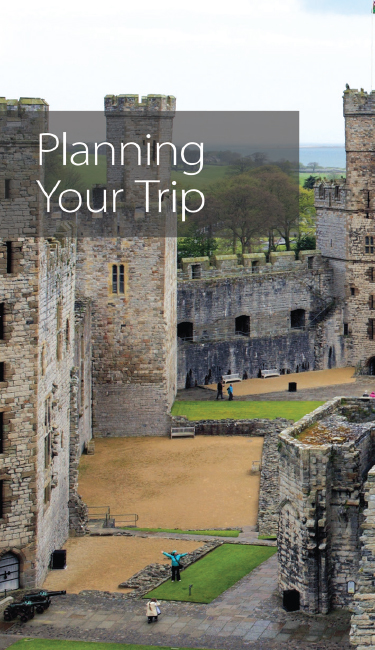
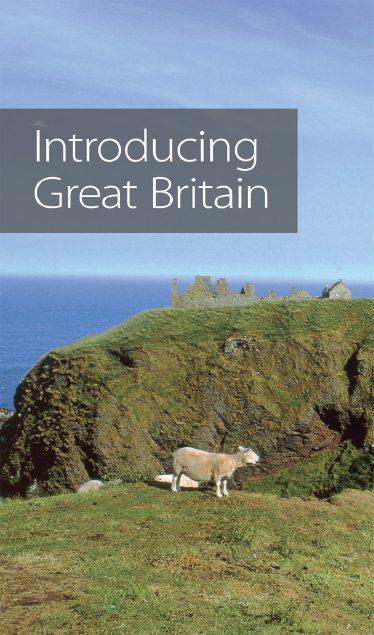

Green Guides - Discover the Destination
Main sections
PLANNING YOUR TRIP
The blue-tabbed section gives you ideas for your trip and practical information.
INTRODUCTION
The orange-tabbed section explores Nature, History, Art and Culture and the Region Today.
DISCOVERING
The green-tabbed section features Principal Sights by region, Sights, Walking Tours, Excursions, and Driving Tours.
Region intros
At the start of each region in the Discovering section is a brief introduction. Accompanied by the region maps, these provide an overview of the main tourism areas and their background.
Region maps
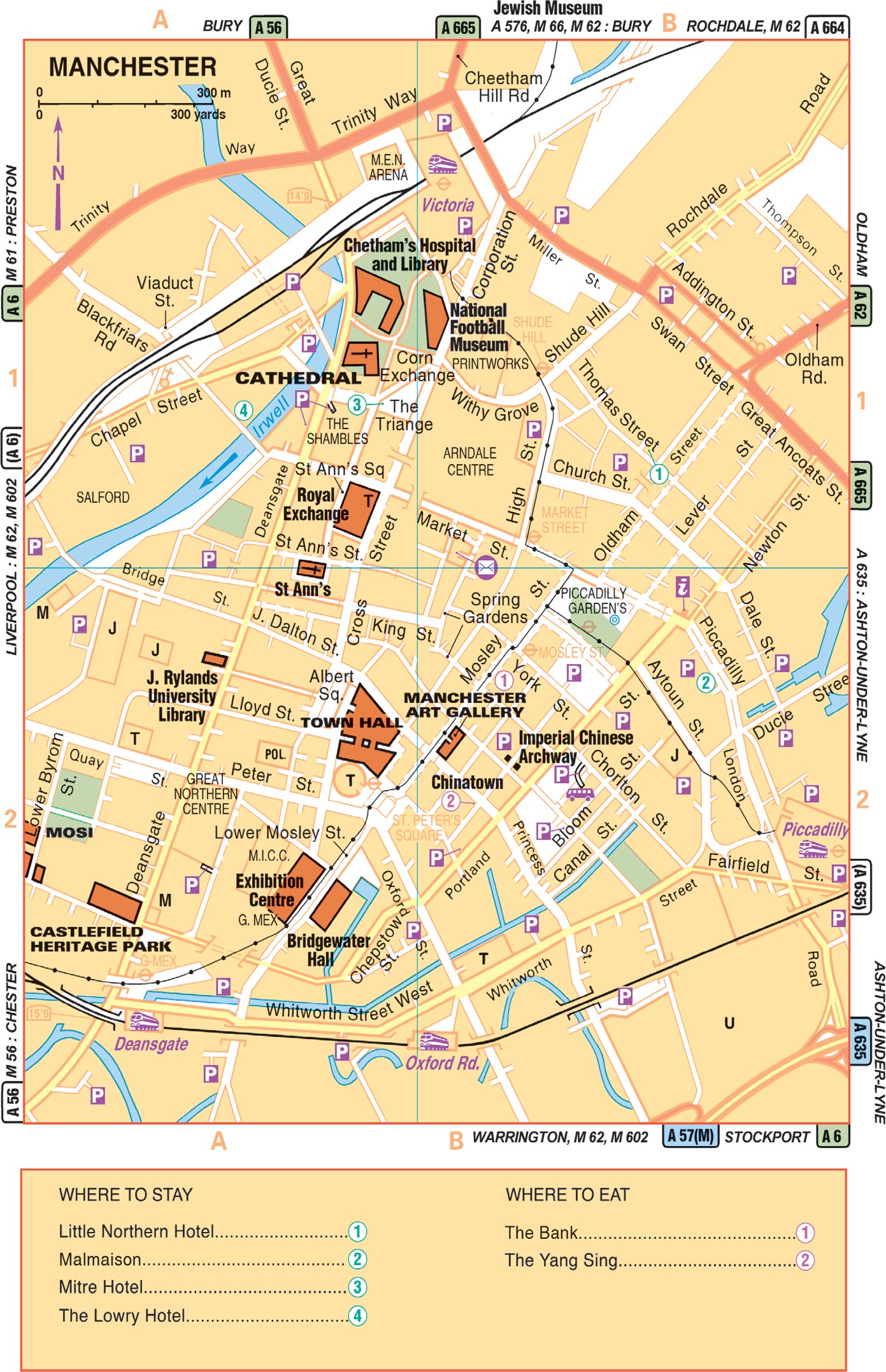
Star ratings
Michelin has given star ratings for more than 100 years. If youre pressed for time, we recommend you visit the three or two star sights first:
aaa Highly recommended
aa Recommended
a Interesting
Tours
Weve selected driving and walking tours that show you the best of each town or region. Step by step directions are accompanied by detailed maps with marked routes. If you are short on time, you can follow the star ratings to decide where to stop. Selected addresses give you options for accommodation and dining en route.
Addresses
Weve selected the best hotels, restaurants, cafs, shops, nightlife and entertainment to fit all budgets. See the Legend on the cover flap for an explanation of the price categories. See the back of the guide for an index of where to find hotels and restaurants.
Other reading
Michelin Guide GB & Ireland
Eating Out in Pubs
Green Guide London
Green Guide Scotland
Must Sees London
Road Atlas - Great Britain & Ireland
Regional Maps 501, 502, 503, 504.
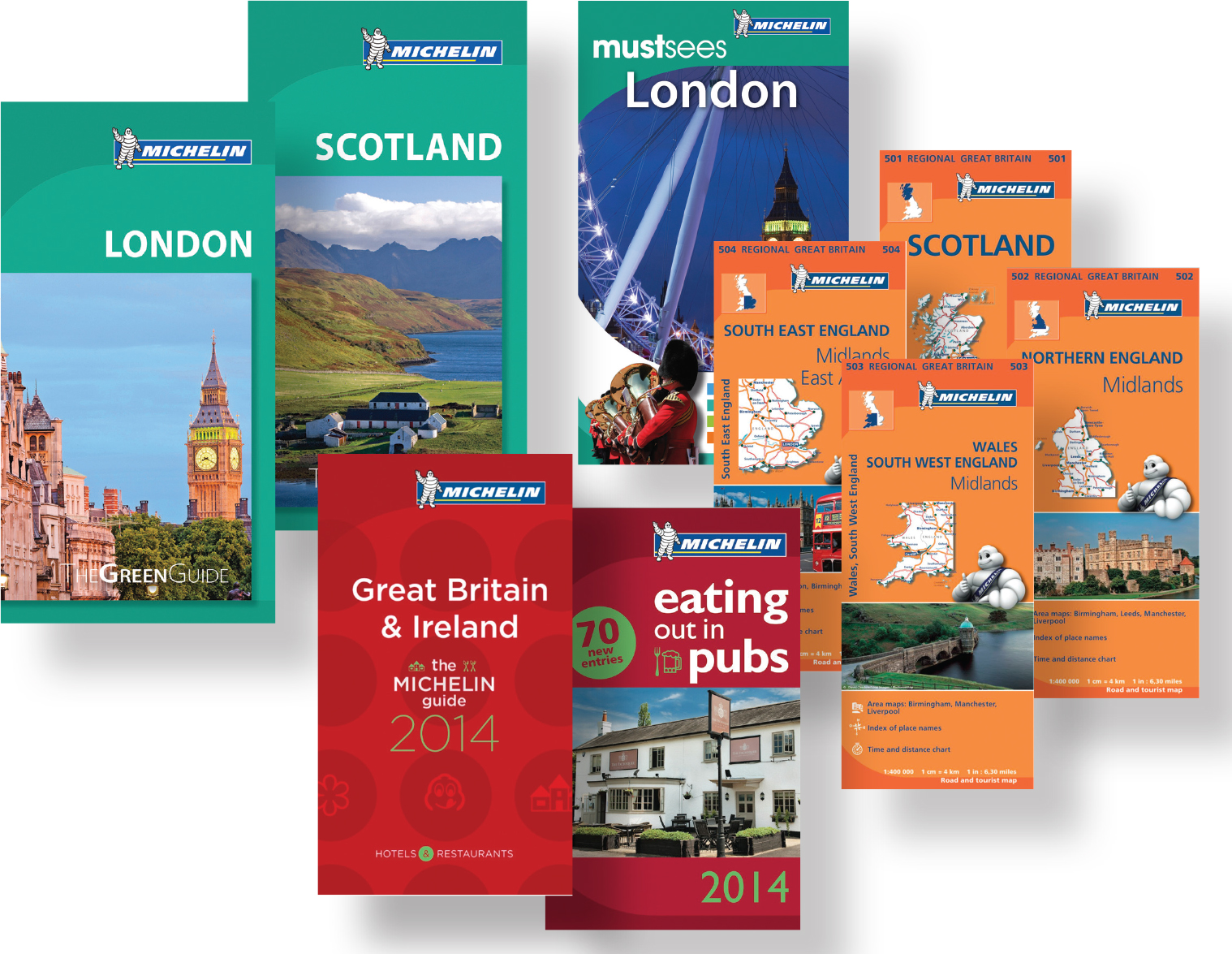
Welcome to Great Britain
Three unique countries and many different landscapes make up Great Britain and its surrounding isles. England, Scotland and Wales have been settled for over 700,000 years, but have only been politically unified since 1707, so it is little wonder that they boast different cultures, even different languages in some parts. Until quite recently Londons fashions and styles held sway over the UK but with a gradual decentralisation of not only politics, but attitudes and even lifestyles, today cultural diversity is celebrated throughout the land with many regions, towns and villages, refining, reviving and reinventing their own respective identities. Eat local, drink local, shop local and explore local are the new mantras, and have made Britain a much more rewarding place for both overseas and domestic visitors. Moreover, only a century or so ago, Britain ruled a quarter of the world and this influence can also be found throughout the land. Whereas Britain once exported its way of life to the world, now it is a net importer. If you are in search of traditional Britain with all its heritage, history, pomp and high culture however, have no fear this still plays a vital role, but, as you will discover, nothing stands still for long.

Jacobite Steam Train from the Harry Potter movies crossing the Glenfinnan viaduct, Scotland
Christophe Boisvieux / age fotostock
Regions of Great Britain
London ()
The capital is one of the most cosmopolitan, dynamic, fashionable and cultural cities on Earth, home not only to such quintessential traditional images as Big Ben, Tower Bridge, red double-decker buses, and bear-skinned guards, but also thriving Bengali markets, speedboat rides through the Docklands and stunning new views of the city atop the very best of 21C architecture. For a crash course in the whole of British history and culture, it is also an indispensable first stop.

Stonehenge, Wiltshire
Da Ros Luca / Sime / Photononstop
Surrey, Kent, Sussex ()
These three leafy southern counties provide the main gateways to Britain by air, rail and sea. In summer, bohemian Brighton (London-by-the-Sea), and year-round, historic Canterbury are the major attractions but the small towns and rolling downs of Sussex should not be overlooked.

Cliveden, Upper Thames Valley, Oxfordshire
Fantuz Olimpio/Sime/Photononstop
)
These counties form the old heartland of Wessex, the last English kingdom to be subdued by the Danes, in the 11C. Wiltshire is world famous for Stonehenge but Avebury is equally enthralling while Dorset boasts mysteries of its own, some of Englands loveliest villages and is the home of modern palaeontology with its prehistoric fossils at Lyme Regis. The capital of Hampshire, Winchester, was once King Alfreds seat, and capital of England. It is still a fascinating little city. Elsewhere, Hampshire is home to ancient forest land and, at Portsmouth, Englands naval heritage. It is a rich mix where the distant past is never far away.
Chilterns, Oxfordshire, Cotswolds ()
The rolling Cotswolds hills are a magnet for visitors in search of classic British rural scenery, populated with quintessential English villages, where little has changed in decades. Oxford easily justifies its reputation as one of Britains top attractions; its university and town is a wealth of culture, history and architectural wonder with a thriving student life. The county is also home to great country houses, most notably Blenheim Palace. The Chiltern Hills region is much less explored but a wonderful place for walking with idyllic villages and scenery of its own.

Polperro, South Cornwall Coast
SIME / Leimer / Sime / Photononstop
)
Cultured Bath, with its eponymous Roman springs (open for public bathing) and magnificent Regency architecture, is Englands finest 18C city, invigorated with first-class independent shopping and pubs. Built upon maritime and engineering trades, buzzing Bristol has a rich dockside heritage and Georgian beauty too. Somerset boasts picturesque Cheddar Gorge and mythical Glastonbury.

